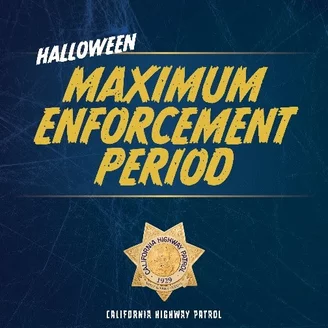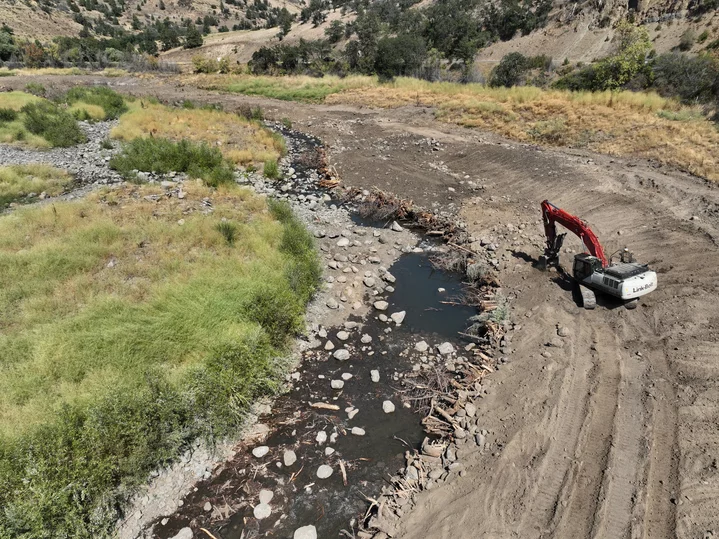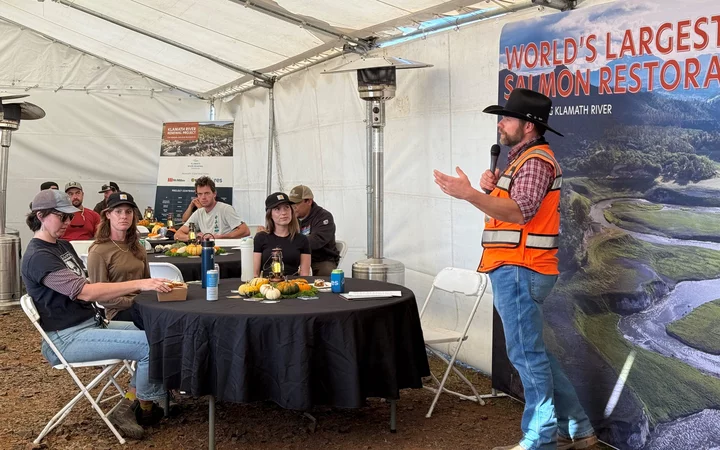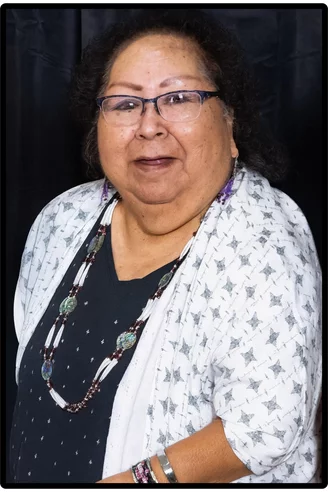OBITUARY: Anthony Oliver (‘Olie’) Knox, 1965-2025
LoCO Staff / Wednesday, Oct. 29 @ 6:56 a.m. / Obits
Anthony
Oliver Knox (“Olie”)
May
9, 1965 – October 7, 2025
Anthony Oliver Knox, affectionately known as “Olie,” passed away peacefully on October 7, 2025, at the Hospice House in Eureka, surrounded by love — with his devoted sister, Kathryne Koch, and his loyal companion, Toots, by his side.
Born on Mother’s Day, May 9, 1965, in Stockton, California, to John Knox and Gloria Cardoza-Knox Stephan, Anthony was third of four children, including his late sister Lisa Knox, sister Kathryne Koch, and half-sister Jessica Scott (Little sister).
In 1977, the family moved to Humboldt County, where they sold their airplane for a commercial fishing boat, the Billie Jean. At just 12 years old Ollie began a lifelong career as a fisherman. He worked aboard vessels such as the Active II, fishing and crabbing along the coasts of California, Bay Area, Humboldt County, Oregon and Alaska.
As a boy, Olie was an avid baseball fan and played pitcher. He also loved football, baseball, fishing, motorcycle riding, hunting, and gardening. He was an avid fan of the Atlanta Braves and the Denver Broncos. Olie attended Jacobs Junior High, Zane Jr High and Eureka High School, Olie was known for his infectious sense of humor — something everyone who knew him would never forget. Once he became your friend, he was a friend for life and cherished his friendships with every drop of his soul. He loved to party.
Though life brought its share of struggles, Olie found joy and peace in the simple things — especially the company of his beloved dog, Toots (“Tootsie Roll”). Often seen riding his electric scooter with Toots faithfully at his side, while drinking a beer listening to his radio, Olie made his home in Fortuna, California, where he enjoyed visits from his sister Kathy and phone calls from lifelong friends.
Olie is survived by his sister Kathryne Koch and her husband Roger, his “little sister” Jessica Scott, his nieces and nephews Phelix, JR, Samantha, Kori-Lee, Jeremy, Melody, and Lyndsey, his many Great-Nieces and Nephews and his cherished companion, Toots.
He is preceded in death by his parents Gloria and Henry Stephan, his sister Lisa Knox, his nephew Terry Moore, Biological father John Knox and his beloved dogs Missy and Chopper.
A memorial to celebrate Olie’s life will be held on Saturday, December 6 at 2:30 p.m. at the Moose Lodge 4328 Campton Rd., Eureka. Friends and family are encouraged to bring their funniest stories to share, in honor of the humor and heart that made Olie unforgettable.
###
The obituary above was submitted on behalf of Olie Knox’s loved ones. The Lost Coast Outpost runs obituaries of Humboldt County residents at no charge. See guidelines here.
BOOKED
Yesterday: 5 felonies, 21 misdemeanors, 0 infractions
JUDGED
Humboldt County Superior Court Calendar: Friday, Nov. 28
CHP REPORTS
60526-63559 Sr162 (HM office): Trfc Collision-1141 Enrt
ELSEWHERE
RHBB: Higher-Than-Normal Tides Could Flood Humboldt Bay This Week — Residents Advised to Prepare
RHBB: CHP Reminds Drivers of School Bus Safety Laws as Students Rely on Daily Transportation
Governor’s Office: Governor Newsom celebrates Small Business Saturday, encouraging residents to support their community by shopping local
Times-Standard : Civic calendar | Fortuna to consider $1.5 million CalPERS payment
OBITUARY: Nancy Mary ‘Noni’ Kurtz, 1928-2025
LoCO Staff / Wednesday, Oct. 29 @ 6:56 a.m. / Obits
Nancy Mary “Noni” Kurtz (née DePucci)
March 26, 1928 – October 20, 2025
Nancy Mary “Noni” Kurtz passed away peacefully on October 20, 2025, in Eureka at the age of 97. Born on March 26, 1928, in Eureka, she remained deeply rooted in her hometown throughout her life.
Noni was a devoted homemaker and the heart of her family. She was a beloved wife to her late husband, Albert Kurtz, and together they built a life centered around love, family, and community. Her home was always open — a place where family and friends could find comfort, advice, or simply a warm hug and a smile. Known for her sweet nature, caring spirit, and a touch of stubbornness that made her all the more lovable. Noni touched countless lives with her generosity and warmth. Noni helped care for many nieces, nephews, grandchildren, great-grandchildren and many friends. Noni was always so generous. She will be truly missed by everyone.
She was the cherished mother of Albert (Cathy) Kurtz, Cindy (Albert) Morgan, and Cathy (Ray) Schulz. Her legacy continues through her grandchildren: Heather (Steve) Bryan, ShannonFoster (Rich Bettis), Ryan (Traci) Ober, Jeremy (Trista) Kurtz, and Kurt (Heidi) Ober; great-grandchildren: Ashley (Cody) Elam, Tessa (Phil) Ellebrecht, Jake Overholt, McKenzie (Jorden) Franks, Skyler Ober (Caylee Shannon), Parker (Gracie) Bryan, Breanna Foster-Vaughan (Terry Vaughan) (Logan Miranda), and Kamrin Ober; and great-great-grandchildren: Caidence and Phillip Ellebrecht; Braxton and Bryson Elam; Ariella and Deluca Ober; Kyra and Aerith Overholt; and Axell Franks.
She was preceded in death by her parents Alfredo and Emilia DePucci; her husband Albert Kurtz; sister and brother-in-law Rena and Gene Miller; brother Fred DePucci; granddaughter Shauna Foster; nephew John Miller; and niece Vicky Machado.
Noni’s faith was an important part of her life. She was deeply involved with Christ Lutheran Church in Fortuna where she found spiritual strength and community.
A talented seamstress with nimble hands and a creative heart, Noni enjoyed crocheting intricate doilies as well as making blankets and dolls for loved ones. Her handiwork became treasured keepsakes for generations. Beyond crafting, she created lasting memories through travel — one especially memorable trip being a road adventure to Disneyland with five of her grandchildren. Despite one child getting lost more than once during the trip, it remained a joyful highlight for all involved. She also had the opportunity to travel to Toronto with her husband to visit their son Albert — another cherished memory.
Noni held a special place in her heart for Rio Dell. She loved the town dearly and became a pillar of its community through years of kindness and involvement.
The family extends heartfelt gratitude to Debra Garnes for always being there for Noni and the entire family. Special thanks also go to IHSS caregivers Michelle, Janet, Claudia; the Hospice nurses and aides; and the compassionate staff at Ida Emmerson Hospice House who cared so lovingly for Noni in her final days.
A celebration of life is pending.
Memorial donations may be made to Hospice in honor of Noni’s memory.
May Nancy “Noni” Kurtz’s legacy of love continue to bring comfort to all who knew her.
###
The obituary above was submitted on behalf of Noni Kurtz’s loved ones. The Lost Coast Outpost runs obituaries of Humboldt County residents at no charge. See guidelines here.
WEED TAX NIXED: Humboldt County Supervisors Zero Out Measure S, Citing Industry Woes
Ryan Burns / Tuesday, Oct. 28 @ 4:47 p.m. / Cannabis , Local Government
Longtime Humboldt County cannabis farmers Tom and Karen Hessler, who were once featured on CNBC, address the Humboldt County Board of Supervisors. | Screenshot.
###
Humboldt’s commercial cannabis farmers will never again have to complain about the county’s cultivation tax: It’s gone.
Nine years after local voters approved Measure S— establishing a tiered cultivation tax of $1 to $3 per square foot, depending on grow type — the Board of Supervisors today agreed to eliminate the tax altogether. They did so after noting that the market has “completely crashed” amid rampant overproduction statewide.
The unanimous vote — which excluded Second District Supervisor Michelle Bushnell, who is active in the industry and therefore recused herself — following a public comment period in which nearly two dozen growers, consultants and advocates unanimously urged the board to repeal Measure S.
Third District Supervisor Mike Wilson initially indicated that he’d be voting the other way on the matter. While acknowledging that the industry is in the toilet, so to speak, he said he was “a little uncomfortable” repealing a taxation measure that voters had approved, especially when the only people who spoke up today were those with financial incentives to urge repeal.
Wilson also noted that local taxation isn’t the only factor in the industry’s struggles.
“The thing that made this work to begin with, under prohibition, was because you could hide it in the hills …and now that’s basically what’s making it not work,” he said.
But before the board could vote, there was some confusion about whether a vote to repeal Measure S would be permanent. Deputy County Counsel Joel Campbell-Blair stepped up to explain that it would not. The language of Measure S gives the board the authority to repeal or modify the voter-approved tax (as it did in recent years, suspending it for 2022 and 2023 and then reinstating it at a drastically reduced rate for 2024), but also the authority to bring it back.
“The only thing that could take away a future board’s authority to reinstate [Measure S] would be the voters again,” Campbell-Blair explained.
Following the explanation, Wilson said that, in that case, he’d be voting in favor of the motion.
In introducing the matter to the board, Deputy County Administrative Officer Sean Quincey set the stage with an overview of what’s happened since 2016, when everyone seemed to have dollar signs in their eyes and growers themselves helped draft the county’s land use ordinance, saying they were excited to come out of the shadows. (Marvel at the sunny optimism on display a decade ago, when a growers organization rejoiced that “the future of Humboldt is bright because the farmers and the people are organized.”)
Today, in the somber board chamber, Quincey recounted the obvious.
“The cultivation sector has become oversaturated,” he said. “Licensed growers statewide have the capacity to produce more than eight times what Californians can actually consume, and illegal supply from out of state — namely Oregon — has significantly added to the flooding of supply in the state. This oversupply has driven wholesale prices down significantly.”
Worst of all, predictions that our region would become the Napa County of cannabis proved false.
“Contrary to expectations,” Quincey continued, “sun-grown cannabis from Humboldt’s legacy growers has not commanded premium pricing. The market actually pays far less for outdoor cannabis compared to indoor and mix light.”
The county’s Measure S tax revenues map the downward spiral:
Measure S revenue trend. | Screenshot from county presentation.
###
The board had two options today when it came to Measure S, Quincey said: Repeal the measure altogether or embark on a study to explore possible alternatives, with a goal of putting one on the November 2026 ballot. Wilson noted that there was a third option: Keeping Measure S and modifying it however the board sees fit, as it has been doing.
Meanwhile, the board was also charged with deciding what to do about the $11.45 million that local cultivators owe in back taxes and the $1 million-plus owed in current-year taxes.
The parade of public speakers sang an extended song of sorrow.
“Our local cannabis industry has been desecrated by agency overreach and unfair financial regulatory burden — so much so that I could write a compelling book of agency injustices [that] our farmers have been subjected to in this era of implementing California cannabis,” one consultant said.
Lia Nelson of NorthPoint Consulting said, “We used to have upwards of 100 clients and now we just have a couple handful, most of whom are really, really struggling financially.”
Natalynne DeLapp, who spoke as one of the founders of the Humboldt County Growers Alliance (HCGA), recounted some history, saying “legacy growers” across the state were effectively kneecapped by the removal of a proposed one-acre cultivation cap in Prop. 64, the initiative that legalized commercial cannabis statewide.
Still, the market thrived for awhile, with local growers bringing more than $55 million in tax revenue to the county. But the market crashed in 2021 and never recovered.
“So many of the farmers that are in that room have given their all for this last decade to be part of this community, to normalize, to be trusted community partners,” DeLapp said. “And they have done everything. … [But] more and more and more people are dropping out. We are losing the very culture that makes this place unique.”
Bridgeville grower Nick Glass said he and his wife recently realized that this year could mark their last harvest.
“We looked at each other and we said, ‘Oh, we need to get jobs,’” Glass said. “We spent the weekend building résumés, and hopefully Humboldt’s economy is good enough to support us as we have to move to town, if our farm closes. Which is sad, right? I’ve been doing it for 20 years, and I cannot afford to make a living doing this anymore.”
Several speakers said eliminating the cultivation tax would be a meaningful step in “normalizing” cannabis as an agricultural crop.
When the matter came back to the board for discussion, First District Supervisor Rex Bohn cut right to the chase, making a motion to repeal Measure S. Fifth District Supervisor Steve Madrone immediately seconded the motion.
Wilson said the board still needed to consider the matter of 2026 taxes but was reminded that the motion at hand would eliminate those.
Bohn offered up a summation of Measure S: “This has been an experiment gone to hell,” he said.
Fourth District Supervisor Natalie Arroyo said it’s still important to collect the $11.45 million owed in back taxes for the sake of fairness to those who’ve already paid their bills. Madrone said the county should hold firm on the established December 31, 2025, deadline for paying past-due taxes.
Once the confusion about the permanence of the vote was cleared up, the board unanimously approved zeroing out the Measure S tax rate indefinitely. Staff will need to bring the item back to the board before the end of the year to formalize the change.
The Humboldt County Board of Supervisors.
California Highway Patrol Will be Maximally Patrolling the Roads for DUI Drivers on Halloween Night
LoCO Staff / Tuesday, Oct. 28 @ 1:47 p.m. / Crime
Press release from the California Highway Patrol:
The California Highway Patrol (CHP) will launch a 12-hour Maximum Enforcement Period (MEP) from 6 p.m. Friday, October 31, through 6 a.m. Saturday, November 1, to protect motorists and prevent impaired driving. During the operation, all available CHP officers will be on patrol statewide, focusing on identifying and arresting impaired drivers before they cause harm.
Driving under the influence of alcohol, drugs or a combination of both can have deadly consequences. On average, more than 800 fatal crashes involving impaired drivers claim over 900 lives each year in California, reinforcing the CHP’s commitment to removing impaired drivers from the road.
Impairment is not limited to alcohol. Prescription medications, over-the-counter drugs and cannabis products can all affect a driver’s ability to operate a vehicle safely.
Penalties for Impaired Driving
Drivers arrested for driving under the influence face serious penalties, including:
- Driver’s license suspension
- Fines
- Mandatory DUI education programs
- Jail time
During last year’s 12-hour Halloween MEP, officers investigated nearly 500 crashes statewide. About 90 of those involved impaired drivers, resulting in two deaths and more than 60 injuries. CHP officers also made nearly 120 DUI arrests during that period.
For more information about DUI penalties, visit the California Department of Motor Vehicles website.
Make the Right Choice
To help ensure everyone reaches their destination safely, the CHP urges motorists to:
- Designate a sober driver.
- Use ride-sharing services, taxis or public transit.
- Never drive impaired or ride with someone who is.
If you see someone who appears to be driving impaired, call 9-1-1 immediately.
“Whether it’s Halloween or any night of the year, the decision to drive sober can save a life,” Commissioner Duryee added. “Together, we can make our roads safer and prevent tragedies before they happen.”
The CHP reminds all drivers to make responsible choices behind the wheel — never drive under the influence, always wear your seat belt and follow the speed limit.
The mission of the CHP is to provide the highest level of Safety, Service, and Security.
Celebration Marks Completion of Tributary Restoration at Key Klamath River Sites
LoCO Staff / Tuesday, Oct. 28 @ 10 a.m. / Environment
Heavy machinery was utilized at Jenny Creek to place boulders and trees to slow the water and add habitat complexity for fish and insects.
Press release from Resource Environmental Solutions:
Hornbrook, CA – The end of construction activity on four priority tributaries to the Klamath River was marked with a “restoration celebration” hosted by Resource Environmental Solutions (RES) and attended last week by tribal leaders, contractors and others.
As restoration contractor for the Klamath River Renewal project, RES led the effort to rehabilitate these key tributaries using a large playbook of stream restoration designs and practices. Collectively, these four tributaries historically had provided over 25 miles of high-quality habitat for salmon and steelhead. Each one was rendered inaccessible to these species by four dams constructed in the first half of the 1900s.
The dams were removed in January 2024 as phase one of the largest dam removal and river restoration in the world. In the second phase, stream restoration designs were finalized as reservoir waters receded and historical stream channels became accessible. During the decades these sections of the tributaries were inundated, their natural structures were deeply impaired. Flow patterns, the deposition of sediment, and a healthy riparian zone were all altered, inhibiting key habitat features that returning salmon and steelhead require to spawn and thrive.
“The surgery is over, and the healing of this key salmon habitat can begin,” said Dave Coffman, Director of Northern California and Oregon Operations and leader of the overall restoration effort for RES. “From the dam removal work in 2024 to the stream reconstruction effort led by RES, the major structural interventions needed to restore the river and these key tributaries is complete.”
Primary RES contractors for the stream restoration include the Yurok Tribe Construction Corporation and Stantec. RES led an “adaptive design” process that tied permitting and agency approval to the realities that terrain would only be exposed after the reservoirs were drained. RES and Stantec developed 60% designs before dam removal and adapted them to actual conditions post dam removal.
The Yurok Tribe Construction Corporation, in coordination with the Yurok Tribe Fisheries Department, was the primary implementer of the stream reconstruction on Scotch, Camp, and Jenny Creeks, including re-grading streambank slopes to reconnect floodplains. RES’ in-house team performed restoration construction work at Beaver Creek. Large wood placement, boulder habitat structures, and beaver dam analogs were features of the restoration of nearly 3.5 miles of creeks.
“We brought an intense effort to bear on these four creeks, all in far northern California,” said Coffman. “If you think of the Klamath River as a highway, tributaries are ‘exits’ that salmon can take to get home. These are places salmon historically selected as spawning and rearing habitat, and we want to welcome them back.”
Coffman noted that if the area had not received major rehabilitation, the creeks would have featured steep banks disconnected from the floodplain and would have no large wood in the streams to slow the water down and provide cover and insect habitat. Ongoing erosion would have impaired water quality for years to come, he said.
Dave Coffman of RES congratulates Yurok Tribal members and others involved in restoring key Klamath River tributaries as part the largest dam removal and river restoration in the world.
RES and the Yurok Tribe worked over the past several months to implement stream design and restoration efforts, reconfiguring stream channels to ensure upstream fish passage and restoring habitat for fish spawning and rearing of young.
“This was a dedicated crew,” said Coffman. “A lot of our team essentially lived on the site, putting in 14-to-16-hour days before the window for ‘in-water’ work closed. The entire team was aligned on the importance of this work, and seeing salmon reoccupy the habitat so quickly reinforced the critical nature of completing this massive effort ahead of schedule. I’m proud of the team that came together to make the vision a reality.”
In addition to reconfiguring and restoring stream channels, restoration teams removed hundreds of thousands of cubic yards of excess sediment, relocating it within the former reservoir footprints.
The restoration work took place on land that was home to the Shasta Indian Nation until the Tribe was forcibly removed a century ago to make way for the construction of Copco Dam. Tribal leaders were on hand to celebrate the restoration work.
“Restoration ensures a healthy river for fish, and it also restores the landscape as Shasta people return to Kikaceki,” said Sami Jo Difuntorum, Cultural Preservation Officer for the Tribe. “It is very humbling to see the salmon return in the restored tributaries. It gives us so much hope for the future health of the river and the people as we heal together.”
Phillip Williams, a Yurok Tribe Council member who also serves as President of the Yurok Tribe Construction Corporation, was visibly moved as he discussed the role of the Tribe in healing the Klamath River.
“We are watching a lasting legacy unfold before our very eyes. The Creator is blessing us, and the restoration crews are the tools used to heal the Klamath Basin. Hundreds of salmon are returning home to Jenny Creek. Every fish that spawns represents the hope of a better future for the Klamath River communities,” he said.
Dan Chase, the Director of Fisheries, Aquatics & Design for RES, noted that the restoration work will vastly improve habitat conditions for salmon, steelhead, lamprey, and other native species in areas that were previously inundated with stagnant water seasonally choked with toxic algae.
“Reshaping channels and rebuilding floodplain function creates the foundation for resilient, shaded, and dynamic stream corridors that support diverse aquatic life,” said Chase. “Dam removal made the entire river once again accessible to fish, but restoration makes the previously damaged streams hospitable to them.”
Chase said the entire project team was keenly aware of the sensitivity of working in these newly emerged creeks where young, endangered fish were rearing.
“We captured and relocated juvenile salmon and steelhead ahead of construction, protected turtles and nesting birds, monitored water quality, and safeguarded cultural resources with tribal oversight,” said Chase. “Our tribal partners have often said that we are not only restoring the river, but also a way of life vital to Native American communities who have depended on the river since time immemorial. Everyone involved in this epic project has felt the enormity of the task.”
Salmon have recently returned to spawn in Jenny Creek, one of four high-priority tributaries restored under a plan crafted by RES. A portion of Jenny Creek was covered in up to 40 feet of algae choked reservoir water until Klamath River dams were removed.
OBITUARY: Viva ‘Vi’ Campbell, 1948-2025
LoCO Staff / Tuesday, Oct. 28 @ 6:56 a.m. / Obits
Viva “Vi” Campbell passed away on October 20, 2025. She was born in Hoopa on July 27, 1948, to Harry and Violet Campbell. Viva was a proud member of the Hoopa Valley Tribe and a lifelong resident of Hoopa. She attended and graduated from Hoopa Elementary, Hoopa Valley High School, and the College of the Redwoods. Throughout her life, Viva embraced and lived by her traditional Hoopa ways, remaining deeply connected to her community, culture, and people. She enjoyed making native jewelry, going to cultural events and supporting the youth.
Viva dedicated her life to serving and strengthening her community in countless ways. Over the years, she worked as a postal carrier, cosmetologist, administrative secretary, and a drug, alcohol and domestic violence counselor—continuing her commitment to helping others even after retirement. Her greatest passion was helping others, always striving to heal, uplift, and support those around her. She also demonstrated strong leadership and civic dedication through her service on multiple tribal boards, including the Hoopa Tribal Elections Board, the Hoopa Valley Tribal Gaming Commission, the Hoopa Valley Housing Authority, and the Hoopa Valley Public Utilities District.
Viva is survived by her sisters: Harriet Leach, Sharon Branham, Mary Campbell, and numerous nieces and nephews. Viva was preceded in death by her parents Harry and Violet Campbell; Brothers: Harold Campbell, Leo Carpenter Sr., Daniel Campbell, and Samuel Campbell. Sisters: Marie Campbell-Muller and Emogene Campbell-Carpenter; and Brother-in-laws: Harold Muller, William Injun-Bill Carpenter, Johnathan Leach Sr., and Ben Branham Sr.
Pallbearers: Harold “Os” Campbell, Sam Campbell, Bobby Campbell, Robert Campbell, Samuel ‘D.C.’ Campbell, Doug Branham, T.J. Branham, Derrick Branham, Chris Heath, Travis Brown, Trevor Brown, Kyle Brown, Ramon Rivera, Carlos Aguilar, Derrick Mularky, Scott Searle Jr., Michael Searle, Glenn Keisner III, William McCovey, Athos McCovey, Daniel McCovey, Timothy McCovey, Blaze Carpenter, Jason Marshall Sr., Jason Marshall Jr.
Honorary Pallbearers: Harry “O” Campbell, Bob Campbell Sr., Thomas “Smitty” Branham, Ben Branham Jr., Troy Branham, William “Pecos” Carpenter, Joe Carpenter, Leo Carpenter Jr., Eugene Masten, Michael Masten, Ralph Brown, Scott Searle Sr. Johnathan Leach Jr., Micheal Mularky, Clyde Moon, George Moon, Junior Moon, Everette Colegrove Sr, Everette Muss Colegrove, Mike Orcutt, Kevin Orcutt.
The viewing will be Wednesdoncie Detrick’say, October 29, 2025 from 2 p.m until 5 p.m. at Goble’s Mortuary, 560 12th Street, Fortuna. Graveside services will be Thursday, October 30, 2025 at 11 a.m. at the Hoopa Cemetery. The reception will be at the Hoopa Fire Department (immediately following the service).
The family wishes to extend their sincere gratitude to the physicians, nurses, and staff of St. Joseph Hospital and K’ima:w Medical Center for their compassionate care and professional support.
###
The obituary above was submitted on behalf of Vi Campbell’s loved ones. The Lost Coast Outpost runs obituaries of Humboldt County residents at no charge. See guidelines here.
OBITUARY: Darlene Genevieve Marshall, 1937-2025
LoCO Staff / Tuesday, Oct. 28 @ 6:56 a.m. / Obits
Born on May 27, 1937, Darlene was the first child born to Ernest and Rosalind Marshall. She passed away peacefully at home on October 22, 2025, surrounded by her family and loved ones. She was the oldest grandchild of the Risling family and had wonderful memories of growing up in a large family, including her older sister Ernestine and older brother, Larry “Buddy”. Because she was the oldest of five children born in four years, she spent a lot of time with her grandmother Geneva and aunt Vivien Hailstone.
Darlene was a true Gemini with a curious mind and a creative nature who wanted to explore the world and experience everything life had to offer. She married Charles Hailey, a student who came to Hoopa to work for one year to earn money for college, and at the young age of 15 they moved to Ozark country in southwest Missouri. She often told stories of the vast difference between her life in Hoopa and the life that she learned to live in Missouri. She often credited her mother-in-law with teaching her how to be a mom and run a household.
At 16 she had her first son, Charles “David” Jr., followed by Weldon and youngest son, Mark. In 1961, she was excited to finally have a daughter, Julie Michelle Hailey, who sadly had Hyland membrane disease and only lived for two days. Twelve months later she was blessed with another daughter, Judith Dawn.
Her favorite expression, fondly remembered by her children, grandchildren and great grandchildren was “we are off, on another adventure.” During her marriage she lived in Missouri, Texas, Louisianna, Mississippi, Michigan and Florida. She loved traveling and moving to new areas. In Missouri, she worked at Sears, selling warranty agreements and won awards for having the top sales in a 5-state area.
After 21 years of marriage, Darlene and her husband divorced and she later said that it was a blessing in disguise because she then came home to Hoopa and got to spend the last few years of her father’s life with him. It was one of the most cherished times of her life that she would later say that she wouldn’t trade for anything.
Darlene, like her father before her, was a master storyteller who shared our local history and traditional stories. She was invited to conferences, schools, girl scout outings and other events all over the state to share stories. Darlene was also a published writer of poetry and fiction writing, often reflecting events and historical things that had happened, in a creative platform.
After returning to Hoopa, she worked for the Oral History Project, transcribing interviews that had been done with tribal elders. Always a history buff, she loved this job and couldn’t wait to go to work every day. She worked at the Manpower program as a job developer for years and then become the Director until 1984. Her last employment before retirement was at the Lucky Bear Casino, working as a cashier and then in surveillance.
Darlene had a pension for fast, race cars and in her life owned a 1967 350 Camaro, a 1969 Firebird 400 and a Chevelle that was hopped up. She thought anything else was boring.
Starting in the late 1980s, Darlene started developing patterns that could be interfaced with knitting machines to incorporate our basket designs into hats, blankets, baby sets and other knitted products. She successfully ran a business in partnership with the “Knit Tree” in Redding, designing, making and selling products for the next 25+ years until her eyesight would no longer allow her to run the knitting machines. Even now you can see babies in her baby sets and people wearing her hats, scarfs and headbands.
Darlene would say though that her reason for living was her children, grandchildren, great grandchildren and now great great grandchildren. She loved each one of them and developed a special relationship with all of them. She would brag that she had the most beautiful, smartest and most remarkable grandchildren of anyone in the world. And would say, “I know everyone things their grandchildren are the most special, but in my case, I know it’s true.”
Even in her older age, she loved camping and the outdoors and would sit around the campfire telling stories. She loved to gamble, play bingo and travel. In 1993, she went with her aunt Vivien and cousin Sonny Boy on the trip of her life; 17-day trip to Norway, Finland, Sweden and parts of Russia. Her dream was to go to Scotland, and although she didn’t make it there, she read a lot of books and researched that country.
Darlene was an avid reader and read a book every day. She was notorious for reading the last chapter first and then going back and reading the rest of the book. It was a big loss to her when her eyesight went several years ago and she could no longer read but her granddaughter Jenna gifted her a kindle and loaded books on it and from then on, she always had her kindle going 24/7 and now listened to a book a day.
Darlene was preceded in death by her mother Rosalind Risling Marshall and father, Ernest Marshall, her brothers Larry Marshall and Ernest “Pee Wee” Marshall, her sister’s Ernestine Moon Prindle and recently her baby sister, Andrea (Jen) Kelsey, son’s David and Mark, son in law, Gordon Surber, daughter Julie, granddaughter Brianna Hailey,Shankle, great grandson Mark Andrew Hailey, II, nephews Paul Yo-Yo Moon, Damon Hailstone, Larry Marshall Jr., Blaine Marshall, Mike Kelsey, Dale Kelsey, Steve Marshall, nieces Dorane Moon, Mechelle Moon and great nephew baby Gary. as well as many aunts, uncles, cousins and dear friends.
She is survived by her son Weldon (Lori) Hailey, daughter, Judith Surber, Daughter in law Dana Hailey, sisters Bonnie Roberts and Betty Hutt, grandchildren, Kiersten McAvoy (Chad), Carrie Mello(Tim Sanderson), Jenifer Hailey, Paul Hailey (Yari), Shelly Bommelyn (Allen), Jordan Hailey, Jenna Hailey, Joseph Hailey (Mercedes), Sport Surber (Raven), Roger Surber (Ethel) Cory Surber, Megan Surber (Stoney McCoy) and Anna Kay Hailey, as well as numerous great-grandchildren and great-great-grandchildren, nieces and nephews.
Services will be held, October 28, 1 p.m. at the Neighborhood Facilities in Hoopa, California with interment at the Hoopa Cemetery. Food will follow at the Fire Hall.
Pall Bearers: Sport, Roger and Cory Surber, Paul, Jordan and Joseph Hailey and Stoney McCoy.
Honorary Pall Bearers: Mio Martinez, Hayden Mello, Charlie Hailey, Damon Hailey, Micheal Hailey, Benjiman Surber, James Bommelyn, Roger Surber Jr., Holden Surber, David “Doo” McCoy, Chad McAvoy, Allen Bommelyn, Tim Sanderson, Dale Risling, Ken Risling Gary Risling, Baron Risling, Leslie “Sim” Risling Jr., Bud Hardy, Mike McBride, John “Knox” Marshall, Rob Roy Latham Jr., Greg Moon, Neil Moon, Darren “Doodles’ Marshall, Randy Marshall Dodge, Lyle Marshall, Joseph Hutt, Wesley Hutt, Bob Roberts, Russ Roberts, Lyle “Elmo” Moon, Anthony “Tony” Risling, Lawrence Tracy, Adam Allen, Melvin Marshall Sr., Julian Lang, Emil Marshall, Daniel Lopez, Ronnie Risling, Leslie Risling, Kyle Risling and Lil Baron Risling and Nick Anderson
A special thank you to grandson Roger, granddaughter Megan and Stoney McCoy, who provided Darlene with loving care, making it possible for her to be cared for at home and Katherine Mize at Madrone Care.
Here’s to the next adventure, Mom. May it be the best yet.
###
oncie Detrick’s
The obituary above was submitted on behalf of Darlene Marshall’s loved ones. The Lost Coast Outpost runs obituaries of Humboldt County residents at no charge. See guidelines here.











